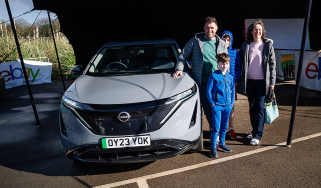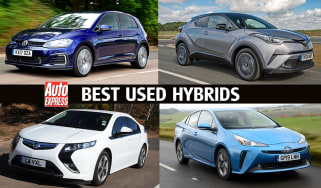Kia Niro review
Efficient, practical and boasting excellent on-board technology, the Kia Niro is a family SUV that offers great value for money

The Kia Niro once again delivers on the practicality front, and any notion that it would be compromised due to the mix of internal combustion and pure-electric powertrains can be dismissed. The conventional hybrid model is a tough competitor in a congested market, while the plug-in hybrid offers the flexibility of its electric power that is impressive as well as efficient. The range-topping Niro EV doesn’t offer world-beating range, but its versatility, comfort and excellent onboard technology will appeal to family and business users alike.
Cabin space across the Niro range is superb, its infotainment system is top-notch and the low running costs are particularly appealing, but just like the old car, the Niro doesn’t feel all that special to drive and some of its interior quality is lacking. That aside, the Niro (in whichever form you choose) is a strong contender across a variety of segments, and one of the best small SUVs on the market right now.
About the Kia Niro
Kia launched the first-generation Niro in the UK back in 2016 and it was a smash hit. It managed to win plenty of Auto Express group tests against esteemed opposition and the all-electric e-Niro won our 2019 Affordable Electric Car of the Year award. This second-generation model looks to follow in the footsteps of the original, once again being offered with hybrid, plug-in hybrid and fully electrified variants (although the electric Niro is now called the Niro EV). It also managed to win our Small SUV of the Year award in 2022 and our sister title Carbuyer’s 2023 Car of the Year title shortly after it launched.
Given the Niro is offered with three distinct powertrains, it has a long list of rivals. The Niro Hybrid and PHEV come up against the likes of the Honda HR-V, Renault Captur, Nissan Juke, Toyota C-HR and the Kia’s own sister car, the Hyundai Kona: our Car of the Year and Small SUV of the Year for 2023. The Niro Hybrid must also compete with the usual cohort of hatchbacks such as the hybrid-only Toyota Corolla and Honda Civic, plus the Vauxhall Astra and Peugeot 308 which are both offered with plug-in hybrid power.
More reviews
Car group tests
- BYD Atto 3 vs Kia Niro EV 3: 2023 twin test review
- MG4 vs Kia Niro EV: 2022 twin test review
- Kia Niro vs Nissan Juke: 2022 twin test review
In-depth reviews
Long-term tests
Road tests
Used car tests
The pure-electric Niro EV has a slightly different field of competitors, namely other small electric SUVs such as new Hyundai Kona Electric, BYD Atto 3, Peugeot e-2008 and Smart #1, not to mention zero-emissions hatchbacks like the Renault Megane E-Tech, Cupra Born, Volkswagen ID.3 and MG4.
The Niro has received a major makeover for its second generation with an entirely new front-end design with pinched headlights and a single light cluster below (quite similar to BMW’s recent design language). The electric Niro EV gets a slightly different face due to the charging port being located at the front, rather than on the front wing of the Niro PHEV.
Like the old model, the Niro hybrid utilises a 1.6-litre GDi (Gasoline Direct Injection) petrol engine combined with an electric motor fed by a small battery, all used to drive the front wheels (like all Niros). The same petrol engine features in the plug-in hybrid, but it’s mated to a more powerful electric motor and larger battery for a pure-electric driving range of up to 40 miles. Both hybrids get a six-speed dual-clutch automatic transmission.
The new 64.8kWh battery found in the Niro EV is barely any bigger than the old e-Niro’s unit and 201bhp power output is identical. But range is up an extra five miles to 285 miles and recharging from 10 to 80 per cent takes 45 minutes, which is nine minutes quicker than the old e-Niro.
The Niro’s trim structure is incredibly simple, kicking off with the entry-level ‘2’, then the ‘3’ and finally top-spec ‘4’. All models are equipped with alloy wheels, LED daytime running lights, a digital instrument panel, Apple CarPlay, Android Auto, a reversing camera, rear parking sensors and smart cruise control, among other safety features. The size of the digital driver’s display and central touchscreen vary depending on the trim level, with range-topping models equipped with two 10.25-inch panels.
Pricing for the entry-level Niro Hybrid in 2 trim starts from around £30,000, while the equivalent Niro EV comes in at over £37,000. Top-of-the-range versions of both come in at nearly £35,000 and more than £43,000, respectively. Sales of the Niro PHEV have been temporarily suspended, but the plug-in hybrid was priced from around £34,000 to £40,000 when it was last on sale – putting it right in between the Niro Hybrid and Niro EV
Frequently Asked Questions
For an alternative review of the Kia Niro, visit our sister site carbuyer.co.uk...



























